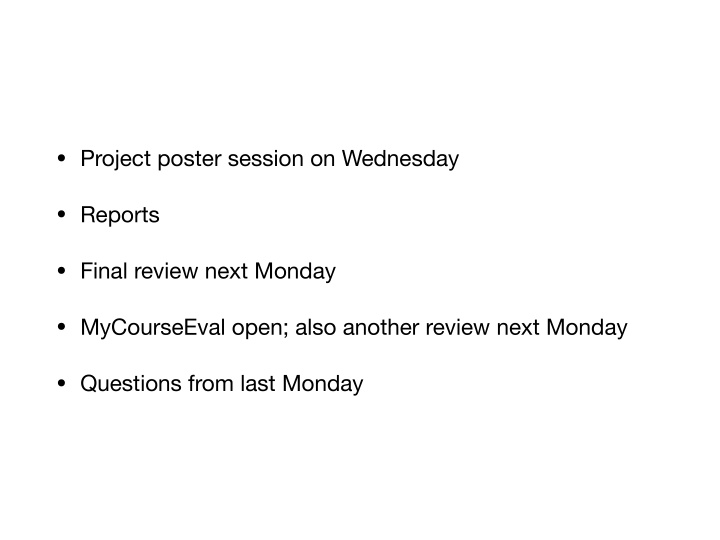



• Project poster session on Wednesday • Reports • Final review next Monday • MyCourseEval open; also another review next Monday • Questions from last Monday
Cryptoeconomics December 2, 2019 guha.jayachandran@sjsu.com
What is Money? Many things through history: • Shekels measure of weight • Shells • Gold/silver coins • Paper receipts • Dollar (fiat today)
What is Money?
What is Money? “Any item or verifiable record that is generally accepted as payment for goods and services and repayment of debts, such as taxes, in a particular country or socio-economic context”
What is Money? Jevons 1875: • medium of exchange • unit of account • store of value • standard of deferred payment (subsumed by previous ones)
Is Cryptocurrency Money? • Legal • Practical
What is Money? • Fungibility? • Stability?
Why is Money Worth Something?
Faith • We believe money has value, so it has value • If faith is lost (due hyperinflation, for example), can enter a downward spiral
Inflation Decrease in purchasing power of currency Increase in prices
Modern Monetary Theory • Heterodox economic theory that has recently gotten attention • Highly controversial as it argues governments can print money (up to a limit) without any bad consequence • Argues that money gets value because of taxes
Money Supply • M0: Coins and cash • M1: M0 plus demand deposits (checking accounts) • M2: M1 plus savings accounts under $100,000 • MZM, M3, M4 too
Fractional Reserve Banking • Bank lends more than it has in deposits • “Run on the bank” a potential problem • FDIC insurance mitigates this in the U.S. • Central bank sets reserve requirement • Banks create most money
Money Supply U.S. M0: ~$3,000,000,000,000 U.S. M1: ~$15,000,000,000,000
Consider Forks Again
Protocol Design • Learn from economics, don’t ignore it • How many coins, fixed or variable supply • Game theory of people maximizing value • Fungibility • Velocity • Many more
Why No 51% Attack
Why No 51% Attack The argument: If you believe the system is rigged, will you want BTC? If people lose confidence in BTC, what happens to the value of the attackers’ holders?
Velocity • Equation of exchange from economics: MV=PT ( M = money supply, V = velocity of money, P = average price level of goods, T = number of expenditures) • Intuitively, how much is money moving around • What happens to P as velocity changes • One model
Stable Coins • Maintain a stable value relative some peg (dollar, basket, etc.) • How? • Reserve • Mint and burn • Other?
DeFi • Decentralized finance • Lending, options, futures, etc. • O ff er relatively high returns at the moment, with varying levels of risk
Economics • Don’t ignore traditional economics • Many cryptocurrency analogs of traditional financial instruments possible • Many new experiments possible with cryptocurrency to test economic theories • New context
Recommend
More recommend